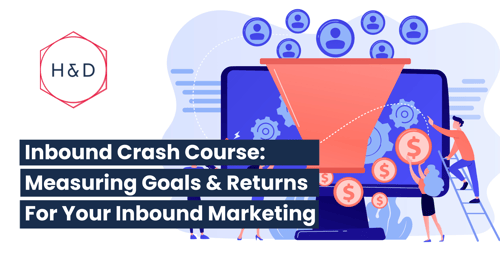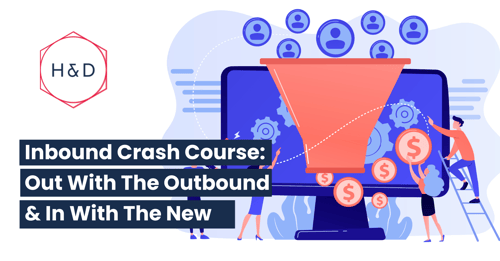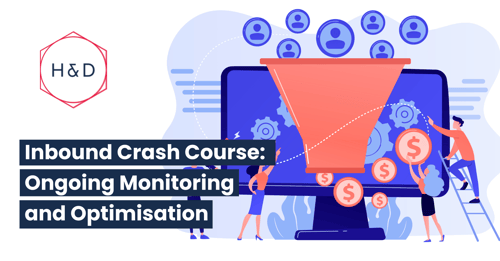
You have a business you love, a product to sell that you're passionate about, and it's time to fire up the marketing pistons and start generating some quality leads.
A lot of businesses come to us knowing they want to go down the inbound marketing route but aren't sure where to start. Luckily - we have a team of talented individuals to walk you through the process.
If you're at the stage where you're looking for the 'how to's' of inbound marketing, you've come to the right place. We've put together a step-by-step process, an Inbound Marketing 101 if you will!
Welcome, and good luck on your marketing journey!
Contents:
1. Define your buyer persona
2. Measure your goals
3. Create a content marketing schedule
4. Map your customer's journey
5. Campaigns and creative
6. Build a foundation of solid content
7. Ongoing monitoring and optimisation
8. Align sales and marketing
9. Utilise CRMs
10. Turn inbound leads into inbound sales
1.Define your Buyer Personas
You know you have an awesome product to sell that you’re passionate about, but the chances of it taking off in the market are slim if you don’t know who to sell it to.
A buyer persona is a semi-fictional character that defines who your target audience is based on real, market research from existing customers.
Establishing buyer personas is a perfect starting point on your inbound marketing journey and will allow you to tailor your marketing decisions to perfectly capture your audience.
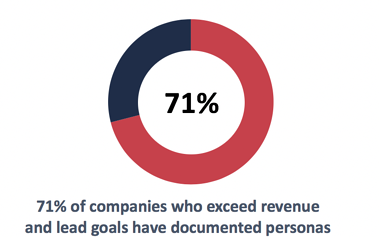
Here’s a snapshot of what you can gain from investing time into creating Buyer Personas:
- Provide Direction to Your Marketing Strategy
- Save Time & Money
- Find Where You Fit in Your Customers’ Lives
The best place to start is by interviewing real customers and asking their opinions - the worst mistake businesses make is assuming they already know their customers. More often than not, your persona research will surprise you.
Collate your interview data with the data already collected by your chosen CRM and you have the basis of a buyer persona!
If you're interested in discovering more about the process of creating buyer personas, you can take a look at our full article: What's a Buyer Persona & Why Do I Need One for Inbound Marketing?
2. Measure Your Goals
You’ve probably heard of the importance of creating a SMART goal. We can’t say it enough - when it comes to developing a marketing strategy, the most important thing to do is assess what you want to achieve in a defined space of time. To jog your memory:
S - Specific
M - Measurable
A - Attainable
R - Realistic
T - Time-bound
If you need a little help with placing your businesses’ goals into a SMART format, we’ve created this FREE guide.
Once you’ve got your goals down and a clear vision of what you’d like to achieve, it’s time to calculate your return on marketing investment or ROMI. A lot of companies make the mistake of calculating their ROMI at the end of their campaign, but we’ve learned that it’s important to define this at the very beginning. Why?
Marketers that calculate ROI are 1.6 times more likely to receive higher budgets.
(HubSpot, 2016, Source)
There are a lot of different methods out there on how to do this, but we like to keep things nice and simple:
How to calculate ROMI the simple way!
ROMI =
revenue - cost
–––––––––––––
Cost
It’s as easy as that. Now that you’ve outlined your goals and have a clear ROMI figure, you’re ready to create your strategy!
Our founder here at H&D and expert on ROMI (ironically, also named Romi), has outlined the process in detail in her comprehensive article: Measuring goals & returns for your inbound marketing.
3. Create a Content Marketing Strategy
These days, most companies know that content marketing is a great way to get their business in the marketplace but are doing so without a clear strategy on which to base their decisions.
The best piece of advice we can give you is don’t create and push content blindly - you’ve got to have a plan behind it.
With the right content strategy, it’s amazing what you can achieve:
- Build a strategy aligned to your personas and goals
- Address every stage of the buyers journey: Top, Middle, and Bottom of funnel
- Develop an SEO friendly architecture
- Define clear strategic directives
- Create enough content for the next 12 months (or more)
Where to start?
It’s important to know that search engines are now looking for more than keywords, they’re smarter than ever and recognise a user's intent. Believe it or not, there is a way to compete for organic traffic and optimise your content for search engines:
Topic Clusters Model
The Topic Clusters model focuses on topics instead of keywords. By choosing a base of core topics that apply to your website, we create a foundation on which all your content is organised. Think of it as a tree with multiple strong branches that support smaller branches - instead of a single trunk with many twigs.
Here’s how that looks.
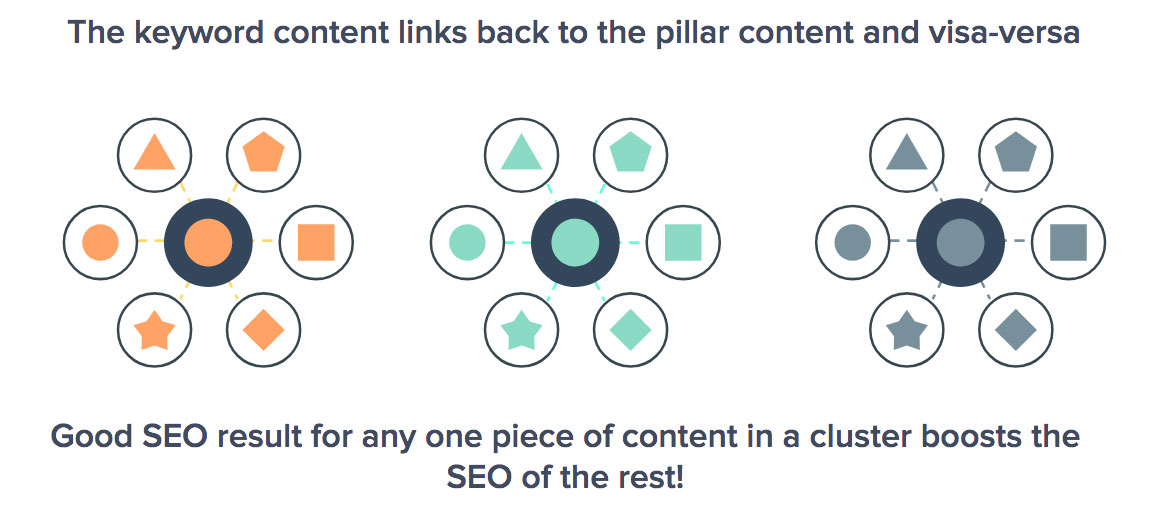
Choosing a topic cluster strategy has many benefits, from improving your site architecture and making it easier for search engines to finding related content.
Most businesses can put together a pretty clear content marketing strategy in as little as two hours. If you’re keen to find out how, we’ve put together an outline for you: How to create a content marketing strategy in 2 hours.
4. Map Your Customer's Journey
Mapping out your customer’s journey through your marketing funnel is the process of making sure there are no roadblocks in their journey and that the drive is a smooth one. In the marketing world, when you’re creating campaigns and strategies - it pays to have a plan in place.
There are two main parts to this process:
Flow
This is creating a representation of the ideal journey and decision-making process your customers should take.
Mapping
Mapping outlines, in detail, all of the touchpoints, CTAs and messaging your customers will encounter along the way.
Don’t worry if your maps and plans look different to others you’ve seen - they should! Every business and persona is different, and therefore the journey your customer should take will be different from the next.
Your customer journey mapping isn’t just a table of contents for every single interaction a customer will have. Treat it as a visualisation of a journey to identify areas where your marketing team can manage how they communicate with your customers.

Ready to create your map? Here’s how to go about it.
- Take the Customer Journey Like You’re an Actual Customer
Put yourself in their shoes to find out exactly what their options will be, and what the outcomes are likely to be.
- Create the Opportunity for Options
For you to accurately estimate what customers might do on their own journey, you need to identify all the possible options they have or might need/want.
- Don’t Just Ask for Feedback: Use Feedback
If you really want to understand how a customer makes a decision, you need to ask them.
- Use Your Map For Good
Once you create your customer journey map, it’s time to put it all into action. A map by itself is not going to make your business better; you need to resolve to turn ideas into reality.
Want to know more about building a customer journey? See our in-depth guide: What is customer journey mapping & why does it matter?
5. Get Creative
You've put together a plan that maps your customers journey, and you have a clear idea of who you're selling your product or service to - now it's time to get creative!
When it comes to curating creative in a campaign, we can't stress enough how important it is to take your time and not overlook it.
You want to create a visual piece of content that jumps out in a news feed, commands attention and makes your audience stop and say, 'tell me more!" If you don't have solid creative that's going to turn heads, you're not going to have any leads coming your direction.
We all remember the advertisements that capture our attention, and New Zealand has a long history of creative that punches well and truly above it's weight globally.
Okay, I'm in! How do I do it?
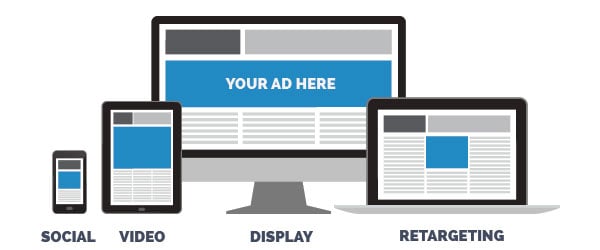
There are plenty of channels you can use to get your stunning creative across, and deciding where to place your ads depends on a few things:
- Audience
- Campaign goals
- Product/service you are promoting
- Industry and campaign message/positioning
- Current competition
- Budget
If you're keen to find out more on how to create ads, and strategise on where to place both your ads and ad spend, you can take a look at our article: Campaigns & creative that help you crush it.
6. Build a Foundation of Solid Content
Content truly is the foundation for lead generation. Imagine you’ve created a blog that’s landed in the top-ranked searches for content relevant to your business. This will drive traffic to your website which has the potential to turn into a qualified lead. Remember:
47% of buyers viewed 3-5 pieces of content before engaging with a sales rep.
(Demand Gen Report, 2016)
There are a few steps you should take before jumping in and creating your first piece of head-turning content:
- Set your content strategy goals
- Select your target persona/s
- Complete an audit of your current content assets
- Define the key topics you will create content around and do keyword research
- Brainstorm content around your topic clusters
- Create a content schedule which outlines, topic, sub-topic, title, format, target keywords and target persona
- Define offer/CTA
- Create and publish your content
If you rinse and repeat this process regularly, your end outcome will be an archive of useful content for your potential leads and a steady stream of predictable traffic to your site. But don’t just take our word for it! Take a look at the stats that back it up in our blog post: Building a foundation out of solid content.
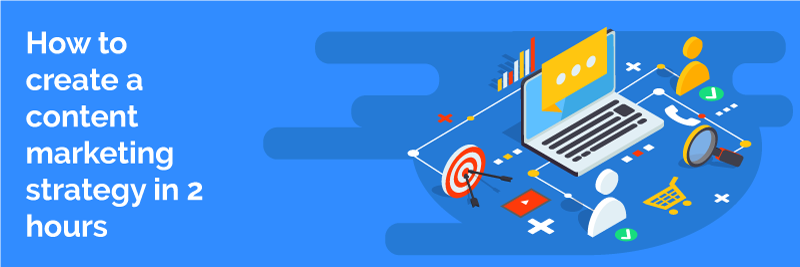
7. Ongoing monitoring and optimisation
Even when you've created a visually stunning campaign with all of the correct strategy and research behind it, sometimes it can simply fall flat. In the case of a successful campaign, there is ALWAYS room for improvement,
This is the beauty of digital marketing - you can constantly monitor and optimise what you do.
Every single month, we'd recommend optimising the following:
Advertising:
- Add and remove keywords
- Optimise spend per channel and ad group
- Troubleshoot any poor performing campaigns
- Refresh campaign creative to combat attrition for long running campaigns
- Ensure that your ads align with any changes to rules and guidelines for their given channel
- Make sure that each ad is utilising extensions and special features
- A/B test different messaging and creative
Landing Pages:
- Optimise keywords
- A/B test different layouts, messages, imagery
- Enhance your forms
- Create new landing pages to optimise for different ads
- Enhance your offer
Nurturing Flow and Emails:
- A/B test different layouts, messages, imagery
- Segment and personalise
- A/B test call to actions (CTAs)
- Enhance offers and enrich content
- Try different workflows to retarget users via other channels to combat drop-off
- Try different workflows to send new emails if the contact has not engaged
Optimise your sales process:
- Review your lead scoring processes
- Review workflows to ensure that no sales qualified lead is dropped
- Review templates and sales automations
If you're constantly on top of these things, and looking to improve your current content, you'll set yourself up for success. Luckily, our H&D founder, Romi, has put together a stellar piece of content here, outlining how: Ongoing monitoring and optimisation

8. Align Sales and Marketing
When aligning Sales and Marketing, we always begin with the age-old argument between the two:
Sales complains that Marketing isn’t generating enough qualified leads and Marketing has a go at Sales for not driving the leads they do get hard enough to convert them into actual clients.
Truth be told, neither works optimally without the other, and creating a harmonious relationship between the two can be paramount to converting more leads to revenue.
But how do you even begin aligning such an established rift? We’ve got you covered.
- Improve Communication between Sales & Marketing
Your Sales team needs to provide feedback about the leads coming through from Marketing. The feedback needs to be clearly defined. This is why understanding what a Marketing Qualified Lead (MQL) is compared to a Sales Qualified Lead (SQL) is crucial.
- Create Content for Sales, Not Just Inbound
Inbound marketing is important to hook your target persona in the first place, but once a contact is in your sales funnel it’s essential that you continue to give them high-quality sales-based content to help turn those inquiries into customers.
- Data is King
If Sales thinks the lead flow was low last month, provide them with numbers from previous months so they can compare objectively. If Marketing thinks Sales isn’t converting leads into clients effectively, present them with lead data that displays the percentage of leads worked in a given month.
- Create an Agreement between the Two Teams
Create a Service Level Agreement (SLA) between your sales and marketing teams. A typical SLA outlines the work expected from both parties (and is subsequently agreed upon by both).
- Integrate your Sales and Marketing Software
This will allow you to track how a visitor to your site turns into a MQL, SQL and eventually a customer.
- Define your Marketing to Sales Handoff Process
Having a document that pre-defines the handoff process means that your leads will have the highest chance of converting to a customer as there are no opportunities for them to be left ‘un-nurtured’.
If you're finding there's a large divide between your sales and marketing departments, and want to create a better sense of unity in the office, we've put together a handy guide and cheatsheet right here: Aligning Sales & Marketing- Can It Really Be Done?
We've also got a great post on using your new inbound sales tools in a non-creepy way: How to Track Your Customer’s Buyer Journey without Being a Creep
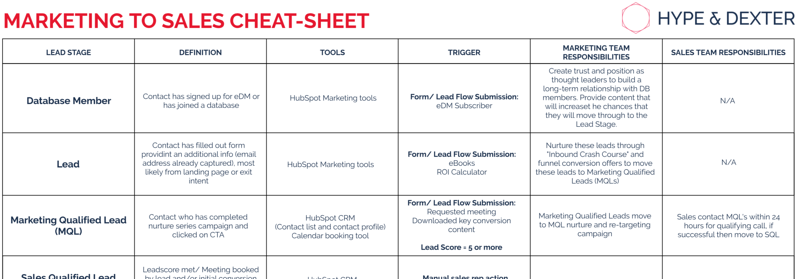
9. Utilise CRMs
Don’t rely on spreadsheets, handwritten notes, and your foggy memory to connect with your customers and convert leads - it’s time to turn to an effective CRM.
If you’ve worked in sales before, you probably already know that CRMs have been a long-standing pain point for many businesses. As a salesperson, you operate off a number of devices and software - transferring your data over manually to a clunky CRM can be time-consuming and feel redundant.
The good news: modern-day CRMs are not sales limiters anymore; they’re now sales enablement tools.
10 years ago, you might have cold-called 100 people who didn’t care about your product, only to get five meetings, then finally a sale three months down the track.
Today, we can use technology like HubSpot’s CRM to discover patterns and triggers of prospects or leads then convert them to customers by using customised content.
If you’re wondering how to turn your negative experience with out-of-date CRMs, to the start of a beautiful and fruitful relationship, our sales extraordinaire, Nick O’neill, has put together a guide from his personal experience.
Find out about the effective CRM we use at H&D, and how our sales team leverages it in our insightful article: It’s Not the Dirty ‘C’ Word Anymore: Why New CRMs Will Transform How You Do Sales
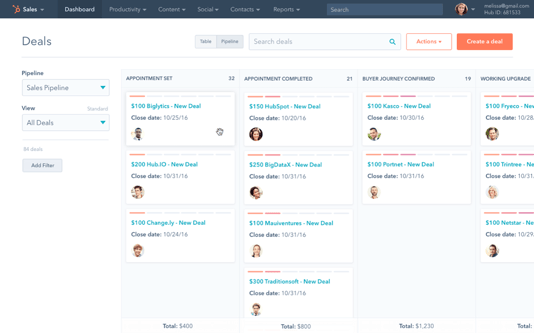
Back to top
10. Turn Inbound Leads into Inbound Sales
The final piece of the puzzle.
You’ve defined your personas, created strong content marketing, developed mind-boggling content and channeled customers down your perfectly crafted marketing funnel. But how to turn these leads into sales?
The first thing you need to know is that the climate of sales is changing. From our own experience, we’ve learned that companies need to change the way they go to market or face the very real prospect of having fewer customers to sell to each year.
Identify, Connect, Explore and Advise
This is the crux of it all.
Identifying the right business opportunities is the key to high conversion rates. Knowing your prospect’s company size, key decision makers, industry and propensity to buy will help your salespeople create a predictable, scalable and profitable sales pipeline.
Inbound salespeople connect with leads to help them decide whether they should prioritise the goal or challenge they're facing. If the buyer decides to do so, these leads become qualified leads.
This is the part that traditional salespeople have the most issue with. In the ‘explore’ phase you need to have the confidence to walk away from a sale if your offering isn’t a suitable fit for the prospect.
Advising is the fun part we know formally as ‘Closing’! Inbound salespeople advise prospects on why their offering is uniquely positioned to address the buyer’s context.
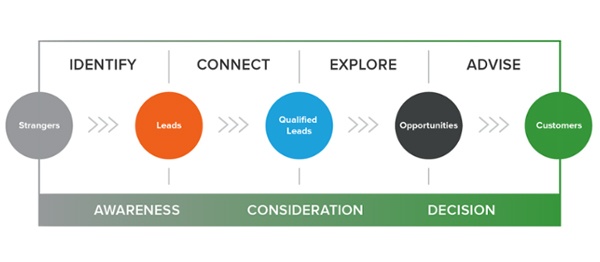
Need a little more detail on these four key steps to get you started? We've put together the steps in our guide; Turning inbound leads into inbound sales
Back to top



